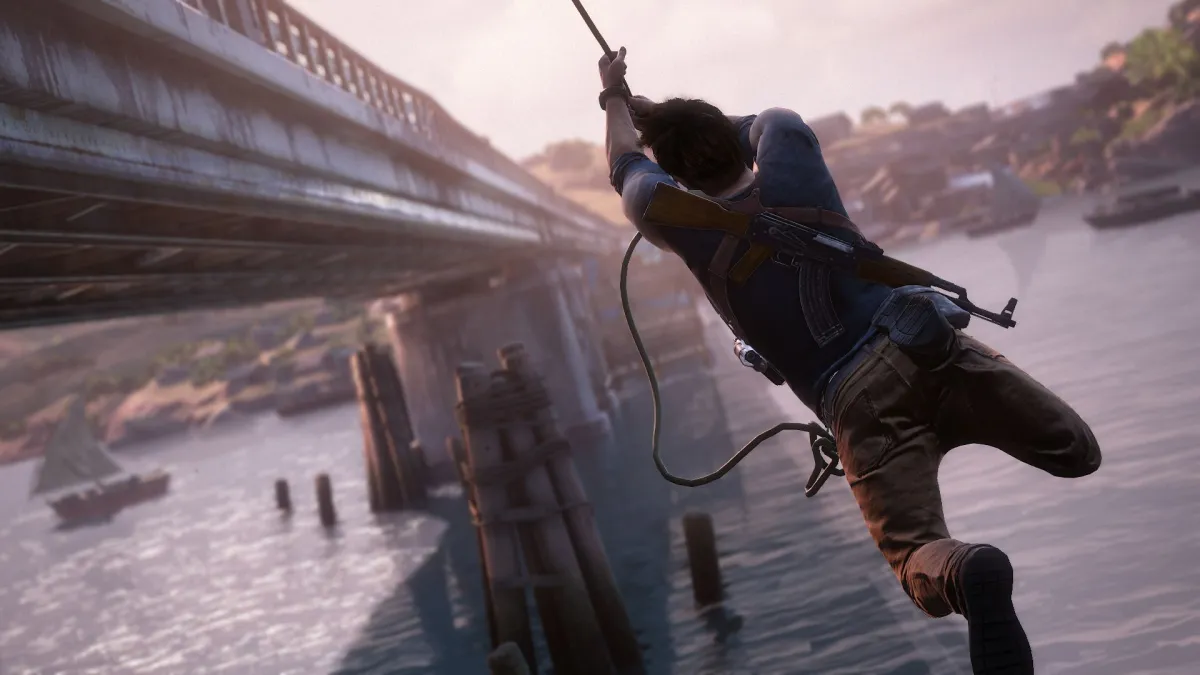On May 10, Sony will release Uncharted 4, the next—and possibly final—title in its award-winning flagship franchise. While it’s a monumental release for the PS4 platform, it will be curious to see if the critical response is as positive as its previous entries, because even though the quality of the game might meet or exceed expectations, the industry itself has pulled away from single-player spectacles that last for 10–15 hours. That’s a shame, because not every gaming experience needs to be a 50-hour extravaganza.
2015 was the year of the massive open-world game, with annual best-of lists featuring titles such as The Witcher 3, Fallout 4, and Metal Gear Solid V. All of those games featured experiences that required 50+ hours for most gamers to finish the main campaign—not even counting all the additional side quests, DLC, or in Metal Gear Solid’s case, online multiplayer.
Metal Gear Solid V was a particularly curious case, as previous entries in the series tended to be 10–15-hour focused experiences. This approach was traded for the open-world model, something series creator Hideo Kojima noted was based on the freedom found in the Grand Theft Auto series. On the flip side, shorter single-player games for this generation have often been criticized for runtimes that had been the previous industry standard. PS4-exclusive The Order: 1886, which objectively was a pretty good—not great—game wrapped in a fantastic graphical and world-building package, had the brunt of its early hype bludgeoned when early leaks mentioned that most players would finish it in 7-10 hours. Release coverage focused almost exclusively on length, not gameplay or other elements, derailing any momentum the title had.
Somehow, we’ve gone from expecting a single player experience of that length (if you’re counting dollar value, about $7 per hour of entertainment, or comparable to a movie) to wanting dozens, if not hundreds of hours for a single purchase. At least this is how the industry is shifting, and as gaming tends to be a bit of a copycat world, it leads to an unfortunate judgment of quantity over quality. This results in an industry overlooking three huge issues:
Long games tend to have a lot of filler: Despite wanting to fix it, I still love Assassin’s Creed, warts and all (especially Evie Frye). But if they stripped away, say, a third of the filler activities (i.e. rooftop races and detective mysteries) and put that development energy into making core mission design more unique and elegant, I doubt fans would complain. In fact, the game would probably be a leaner, more refined, and just better experience. Some modern games seemed so filled to the brim with take-it-or-leave-it tasks that it feels like upper management types gave the development team a quantity checklist to be filled rather than really looking at how to maximize a game’s potential.
It’s hard to tell a story when you have to stop for random tasks: For people that actually got Batman: Arkham Knight running on their systems, they found that the game’s gripping narrative was often interrupted by Alfred “suggesting” that Batman drop everything he was doing and check out random side activities in Gotham City. In some cases, these were forced breaks where you had to complete one or two side missions before the narrative resumed. Not only does this remove player control (“here, you will level grind until we say so!”), it kills any emotional momentum of the narrative—something that can really vary the experience based on pacing.
Not everyone has time for a 50-hour game: The average age of gamers in 2015 was 35, with 44% of gamers above 35. For most of us, the older we get, the less time we have. That doesn’t mean that we enjoy things less; it’s just that we have to be selective about how to spend our time, particularly when geek culture has transcended into quality forms of other media. That means that you’ve got a significant portion of your purchasing audience unable to commit to 50-hour campaigns, even though they really enjoy the concept, gameplay, and world.
It’s great to have a living, breathing virtual world, but there’s still an audience that appreciates that level of detail packed into a 10-hour narrative journey—something that they can pick up, marvel at, put down, and revisit again later like a good book. In the past year or two, this seems to have become the realm of indie digital releases.
But there’s enough audience demand to have single-player games with AAA production values share the digital shelf (and developer budget) with large open-world epics and perpetual multiplayer competition. Quantum Break, an Xbox One exclusive, launched with strong sales despite bucking the open-world trend. Uncharted 4 will be a bit the next industry litmus test to see if it will be criticized for “only” being a shorter game or if critics and buyers decide to focus on the gameplay, characters, and narrative of the 10–15 hour package.
(Side note: Uncharted 4 will have a multiplayer element, but as with previous entries, I’m guessing it will be an enjoyable throw-in and not the primary reason why people buy it.)
Mike Chen is a freelance writer who used to cover the NHL for Fox Sports and SB Nation but now writes about geek parenting and video games. He also builds WordPress websites and writes novels that walk the line between mainstream and science fiction (repped by Eric Smith of PS Literary Agency). Follow him on Twitter.
—Please make note of The Mary Sue’s general comment policy.—
Do you follow The Mary Sue on Twitter, Facebook, Tumblr, Pinterest, & Google +?









Published: Apr 26, 2016 01:07 pm